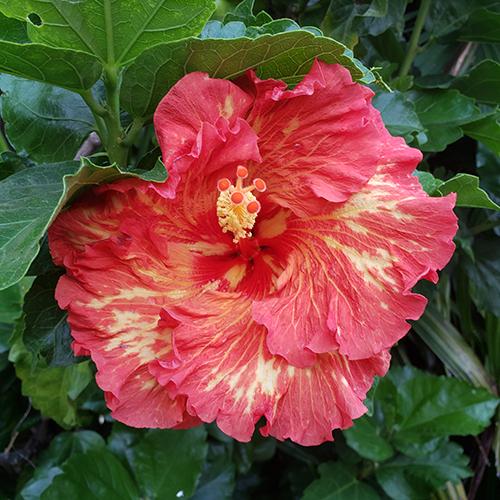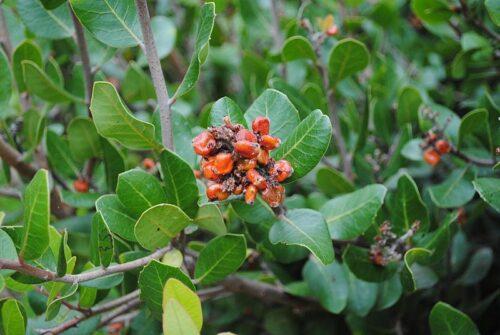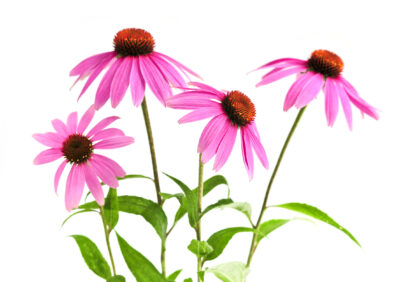
Benefits of Hibiscus
Hibiscus helped save our puppy We found a pedigree Golden retriever for sale for $50 in the local paper. At the time, they were selling

Lemonade berries, Rhus integrifolia, are the fruits of a native Southern California species belonging to the Anacardiaceae family. They have been growing wild since ancient times. The shrubs are primarily found from Santa Barbara County south to Baja California and thrive in coastal sage scrub and chaparral regions. We are blessed wit h several in our yard in Point Loma.
The small flat berries grow in clusters on leafy, evergreen shrubs, also known as Lemonade Sumac, Sour Berry, and Coast Sumac. The bright red-orange fruits are a natural food source for animals and pollinators throughout Southern California.
The berries contain tannins or naturally occurring polyphenols that contribute to the fruit’s sour, tart, and astringent flavor.
Tannins are known to have antioxidant-like properties to protect the cells against the damage caused by free radicals and to boost the immune system.
Among the Kumeyaay and Cahuilla in Southern California the seeds are ground into a powder and drunk as a remedy for fevers, coughs, and sore throats.
The bark and leaves are also made into medicinal teas.
Lemonade berries have a sour, tangy coating on the fruit’s surface utilized in fresh and cooked preparations. The berries are not typically consumed in their entirety as the small hairs on the fruit’s surface may irritate the stomach, leading to indigestion.
Instead, lemonade berries are sometimes soaked in water for a few hours or overnight to dissolve the sticky coating into the water. Once the berries have been immersed in water for several hours, the mixture can be strained through fine mesh sieves or cheesecloth to remove any lingering debris.
Once infused in water, the juice can be kept for three days in the fridge or frozen for several months. Whole, unwashed berries can be stored in the refrigerator overnight. Dried Lemonade berries can be placed in an airtight container for up to six months. The coating infuses an astringent, potent sour taste similar to the taste of lemons, creating a bright and refreshing beverage.
Tea made from the stems can be used to treat coughs. Tea made from the bark, berries, or leaves steeped in cold water can be gargled for sore throats and cold sores, or may be drunk to alleviate diarrhea or urinary problems (best to use leaves for the latter).
Lemonade berry juice can be mixed with sugar as a beverage or incorporated into jams, jellies, syrups, and gelatin-based candies. The juice complements ingredients such as strawberries, blueberries, blackberries, mint, and basil.
The berries can also be dried and ground into a powder as a thickener for soups, dried and incorporated in salads, dips, or yogurt, or ground into a spice and rubbed on roasted meats.
In San Diego County, lemonade berries were used among the Kumeyaay, a native people that have been residing in the area for more than 10,000 years. The berries are known as Huusill if they are red in color or Huutat if they are more orange.
Sour flavor quenches thirst. This is why lemonade is more thirst quenching than water. When hiking, we enjoy sucking on the berries then spitting them out for a refreshing taste and to quench thirst. The evergreen leaves of the plant were also traditionally carried in the mouth by the Kumeyaay on long journeys to quench thirst.
Among the Kumeyaay and Cahuilla in Southern California, the seeds are ground into a powder and drunk as a remedy for fevers, coughs, and sore throats. The bark and leaves are also made into medicinal teas.
The species name, integrifolia refers to this native plant being drought tolerant as well as being fire retardant. I have seen where canyon fires burned up plants and are stopped without damaging this plant. Folks establishing defensible space around their property would do well to plant these. Since they are perennial, it will take some time to grow.
Ripe berries of can be soaked in hot water to produce a tart lemon-tasting beverage. Steeping in almost boiling water produces a stronger drink than steeping in sun-heated water. For a strong drink, you will need a ratio of one-part berries to two parts water.
These berries make a tart snack if picked right off of the bush, but only if sucked for their juice; the pulp is not generally swallowed although several of our students report that they enjoy eating them.
The dried berries can also be ground into flour and added to soup.
Caution: Some people are allergic to the bark, roots, and leaves, so use it sparingly the first time.
Teaching comprehensive holistic education since 1985.
We are currently offering interactive hybrid courses including Herbal Fundamentals, Energy Healing, Aromatherapy and Clinical Herbology
Hybrid means you may choose to participate in each individual class in the hybrid course online or in person.
All of our products are made with love from organic, all-natural and ethically sourced ingredients.
We began making and perfecting our own herbal remedies more than thirty years ago and offer our favorite products for purchase.

Hibiscus helped save our puppy We found a pedigree Golden retriever for sale for $50 in the local paper. At the time, they were selling
Hawthorn Berry Hawthorn is known as the heart herb for its many benefits as a heart tonic. The berry has been a key part of

Can you take herbal supplements to arm your immune system? You probably know that zinc, vitamin D and vitamin C are gotta-have-its. How about herbal

While attending San Diego State College in the early seventies, my work-study job was in the vivarium, a room for keeping and raising animals for